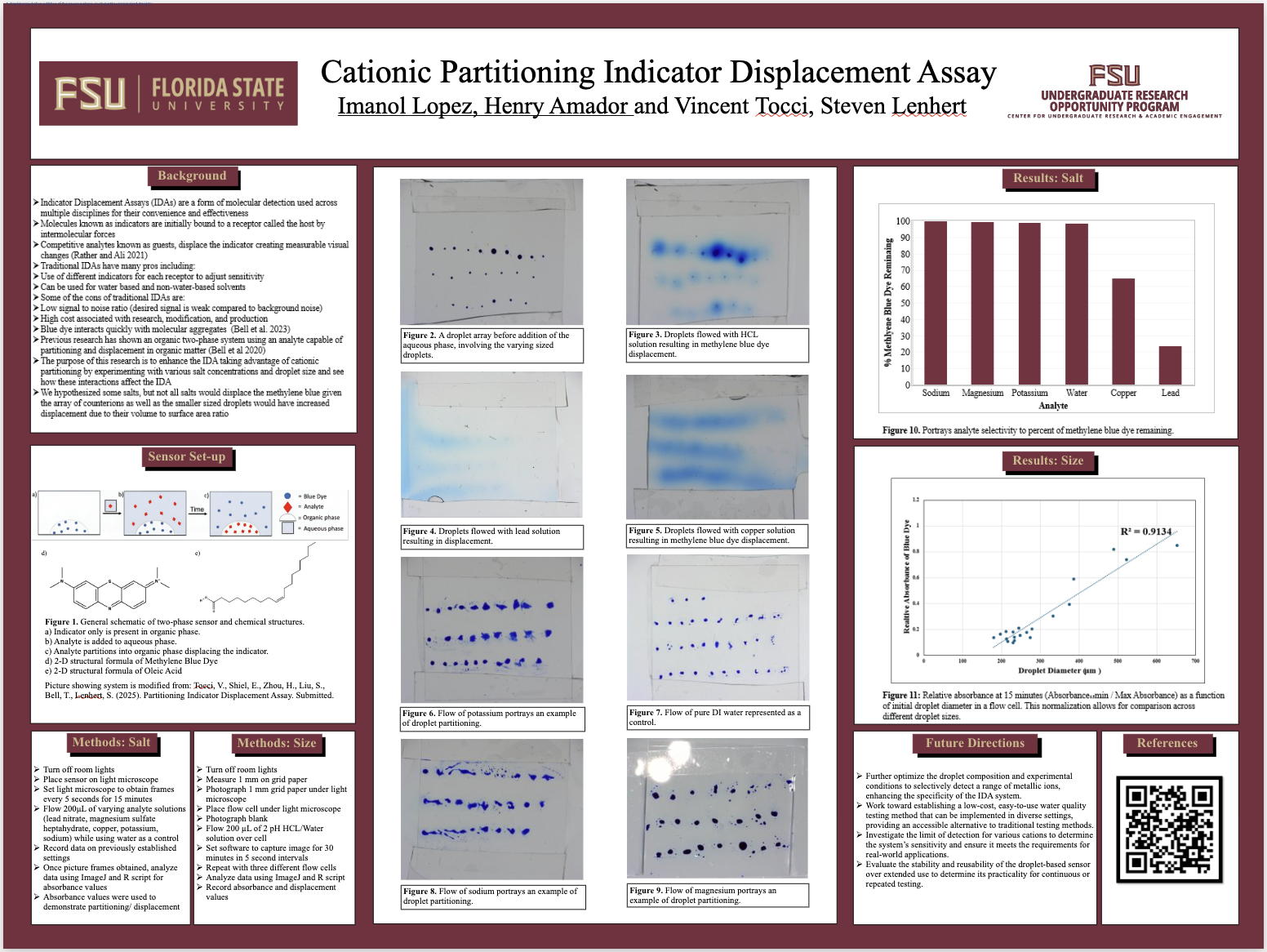Research Symposium
25th annual Undergraduate Research Symposium, April 1, 2025
Henry Amador Poster Session 1: 9:30 am - 10:30 am / Poster #99

BIO
Henry Amador is a freshman at Florida State University majoring in Biological Sciences. Originally from Miami, Florida, he is involved in undergraduate research exploring lipid-based molecular recognition. During the summer, he conducts research at the University of Miami, investigating the genetic factors contributing to Alzheimer’s disease. His interests lie at the intersection of biochemistry and genetics, with a focus on understanding disease mechanisms at the molecular level. Beyond academics, Henry is actively engaged in service and mentorship through various organizations including Catholic Noles and Presidential Scholars. He aspires to pursue a career in pediatric medicine, combining his passion for research with clinical practice to improve patient outcomes.
Cationic Partitioning Indicator Displacement Assay
Authors: Henry Amador, Dr. Steven LenhertStudent Major: Biological Sciences (Pre-Med)
Mentor: Dr. Steven Lenhert
Mentor's Department: Department of Biological Science Mentor's College: University of Muenster Co-Presenters: Imanol Lopez
Abstract
Indicator Displacement Assays (IDAs) are a form of molecular detection used across multiple disciplines for their convenience and effectiveness. Cost efficient and easy to manipulate these sensors can detect small molecules such as pollutants and dyes. Recent research has resulted in the creation of an IDA using a two-phase system that results in the analyte partitioning into an organic oil droplet. To improve upon and alter the previous design, we chose to investigate the effects of droplets size on displacement rate, as well as its ability to detect cationic salts. A solution of oleic acid and methylene blue dye were printed on a slide and later flowed with varying salts. Absorbance data was collected using ImageJ to assess droplet selectivity through displacement/partitioning which determined copper and lead had a higher preference for oleic acid, displacing the blue dye. For the droplet size experiment, the same solution of oleic acid and methylene blue dye was utilized to print droplets of varying proportions onto a slide which was later flowed with an acidic solution. Droplet sizes were analyzed before and after the flow, and absorbance of data was collected similarly to the previous experiment. Analysis demonstrates smaller sized droplets improved the sensitivity of the droplet. Further sensor alteration could lead to specific detection of metallic ions based on droplet composition. If explored further, the implications for this system to be used as a replacement for current methods of water quality testing which remain expensive, insensitive, and not widely available.
Keywords: Biology, Molecular, Assay, Cationic


